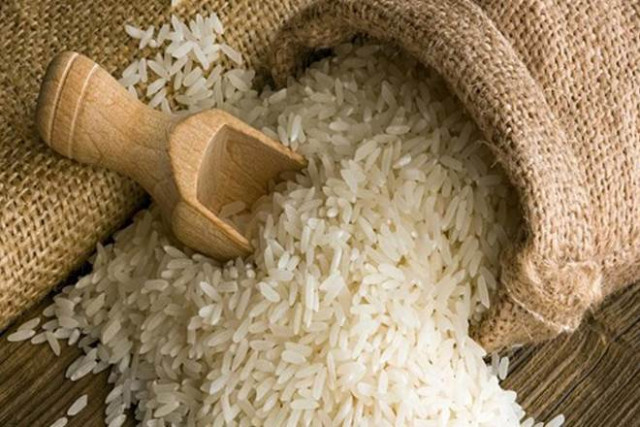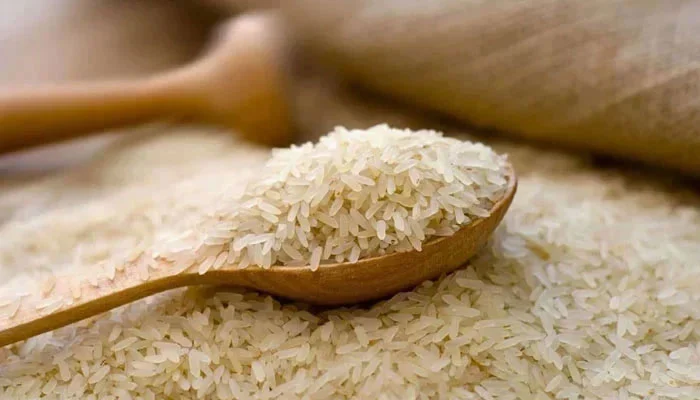Tags
Rice to stay pricey due to Houthi Red Sea attacks, India export ban

India, which accounts for roughly a quarter of global world rice production, has been restricting overseas sales of rice. Meanwhile shipping routes have been undermined by Houthi attacks. All this is taking a toll on the cost of a bowl of rice around the world. Saqib Majeed/SOPA Images via ZUMA Press Wire/dpa
Shoppers around the world are facing another year of expensive rice following India’s trade curbs and the re-routing of Europe-bound ships away from the Red Sea and Suez Canal.
Last year saw a 21% increase in the global rice commodity price, according to a January update from the Food and Agriculture Organization (FAO).
The rise mostly came after India, the world’s biggest supplier nation, sought mid-2023 to restrict overseas sales to make sure it had enough affordable rice for its 1.4 billion people.
Demand for rice was already high after 2022 saw prices of wheat and other grains soar in the wake of the invasion by Russia, the world’s biggest wheat exporter, of Ukraine, another major cereals source.
Rice prices are expected to jump again in the coming weeks ahead of the Lunar New Year in Asia and the Muslim Eid holiday in April, when demand for food typically spikes.
The removal of around 9 million tonnes of Indian rice from international supply has been offset somewhat by the world’s second and third biggest exporters.
In 2023, Vietnam’s rice exports hit a record 8.13 million tonnes, worth almost $5 billion, according to the latest official data from Hanoi. Thai exports topped 8 million tonnes, 10% more than in 2022.
But exports of Asian rice to Europe and North America are also being affected by tensions in the Red Sea, where the US and UK have started retaliatory attacks on the Iran-backed Houthi militia which has been attacking commercial shipping, forcing trade to be re-routed.
“Houthi attacks on shipping vessels in the Red Sea mark a significant flashpoint in global container shipping as rerouted vessels lead to higher shipping costs and scheduling disruptions,” said BMI – A Fitch Solutions Company.
Some estimates suggest it takes an extra 10-15 days and costs up $2 million more to send a ship around Africa to Europe from Asia.
And while 87% of US rice imports from Asia transit the Red Sea, according to S&P Global Market Intelligence, Europe is likely to fare worse.
“The Asia-Europe corridor will face the most acute delays given the scarcity of viable alternatives to the essential Suez Canal and the intricate nature of sea-based logistics,” warned BMI in a January 12 report.
And while the US, Italy and Spain are rice-growing nations, their outputs are not enough to meet demand in North America and Europe.
And India is not likely to resume supplying the rest of the world anytime soon, according S&P Global Commodity Insights, which relayed that “most trade sources said that they do not see the government easing the restrictions before the general election that is expected to take place in April-May 2024.”
https://news.yahoo.com/rice-stay-pricey-due-houthi-145639411.html?guccounter=1&guce_referrer=aHR0cHM6Ly9uZXdzLmdvb2dsZS5jb20v&guce_referrer_sig=AQAAAK2L3KDSJpIcQsFmtSin2zrtQa5H6OaSE_mjrSmdFaxMP3m1ddkvikx5dgHh91g8uJVbl-MfUwqXQO_lEdNjm-iAKpiXEfVmDGR_8uWjTo6mD3IYAQbgAicMpXtbNuMnuY5hucIz-9lwf013IjzPTGyxJ_Dz5vH2NnrCevLzWucgPublished Date: January 15, 2024





